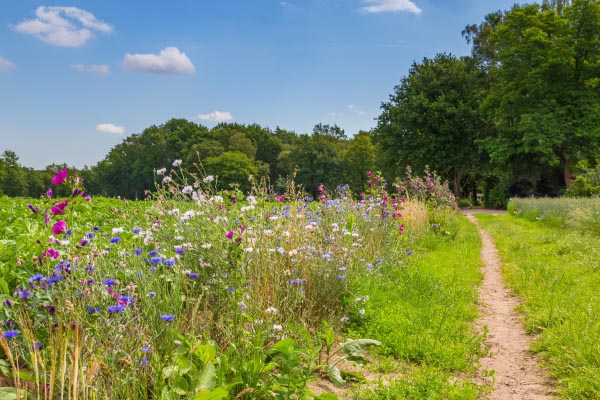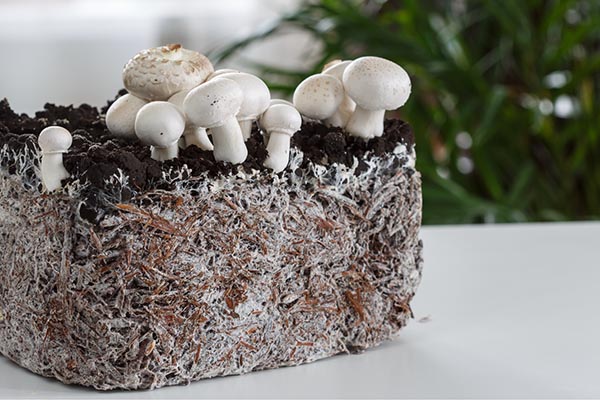As part of its November 2022 Innovate Zero Carbon Event,[1] WTIN conducted an interview with Paul Foulkes-Arellano of Circuthon Consulting on the topic of Regenerative Fashion, in which he has a great deal of expertise, and also a positive outlook on a future where the textiles and apparel industry is making significant progress in reducing its impact on the planet. We followed up with Paul to gain more insight into his knowledge and experience in the field of Regenerative Fashion. (Watch Cary Sherburne’s video interview here.)
What Is Regenerative Fashion?
According to the Circular Bioeconomy Alliance, Regenerative Fashion is “a circular biobased industry that is inclusive, climate and nature-positive, using newly created or restored regenerative landscapes as the basis for circular bioeconomy value chains.” The organization published a Regenerative Fashion Manifesto in April of 2022, billed as “another concrete step towards creating a much more sustainable fashion industry. It is not simply empty words; the manifesto comes with a concrete €1 million project for the degraded landscapes of the Himalayas attached. This project will serve as a blueprint for what can be done to shift the fashion industry towards a more equitable, nature-positive future.”
The Manifesto states: “Regenerative Fashion is about holistically addressing the climate and biodiversity crisis while generating equitable and inclusive prosperity along its value chains. At the same time, it sets out to support the local and indigenous communities responsible for creating regenerative landscapes.” It is recommended reading for anyone concerned about fashion’s impact on the environment. In researching this article, I also came across a book worth reading: Regenerative Fashion: A Nature-Based Approach to Fibres, Livelihoods and Leadership, by Safia Minney (available on Amazon).
An Interview with Paul Foulkes-Arellano
Here’s what Foulkes-Arellano had to say.
WhatTheyThink: Paul, thanks for speaking with me today. Let’s start with a little background on you and Circuthon Consulting.
Paul Foulkes-Arellano: Sure. I began working in packaging innovation back in the 1980s, and that led me into materials innovation and materials more broadly. That includes everything from advanced polymers through to textiles, and some incredibly old technology, like using plants to create textiles.
WTT: In the recent WTIN webinar, you talked about regenerative fashion, and you tied it to regenerative agriculture from an analogy perspective. Can you explain those two terms to our viewers?
PFA: It starts with agriculture. If we look back only a couple of centuries, we were growing a lot of what we use in our daily lives, and it was all regenerative. We had lots of biodiversity. It wasn’t intensive mono-crops; it was a very different way of life. Now there is a huge movement right across the world, going back to regenerative agriculture, without pesticides, without herbicides, without fungicides, and growing in a way which is in harmony with nature and actually boosts nature.
WTT: And how does that relate to regenerative fashion?
PFA: In fashion, it means looking around at these marvelous plants and trees that we have all around us and saying, that could be the basis of my new fashion collection. Do we have enough kapok or hemp or linen to actually clothe the world? Probably not right now, but we need to get back to that place. We can’t continue to depend on fossil fuels and petrochemicals to clothe the world. I mean, look where it has led us.
WTT: You mentioned kapok; some of our viewers may not know what that is. Can you explain?
PFA: Kapok is a tree originally from Mexico and Central America. It’s incredibly tall and quite dangerous to climb. In Indonesia, they have a dwarf variety which is easier to harvest. Imagine a massive cocoa pod, but instead of cocoa, what you pull out looks like cotton. And this material is hyper-absorbent. Also the trees don’t need a huge amount of care. You can neglect them and they still provide you with this marvelous cotton-like product. But unlike cotton, it doesn’t require pesticides or water. It’s an amazing product.

Kapok pods.
WTT: Is staple length an issue with kapok?
PFA: No. Historically, kapok has been used direct from the pod as stuffing in products such as mattresses and soft toys. One company that is doing a lot of work with kapok is Flocus. Its co-founder and co-owner, Jeroen Muijsers, is a very technical textile engineer, and the company offers a host of kapok products, including yarns, fabrics, and insulation materials, and these products offer many benefits for textiles.
WTT: And part of the regenerative process has to do with regenerating the health of the soil, right?
PFA: Correct. There are lots of ways of doing that, particularly leaving roots in the ground and making sure that the billions of microorganisms in the soil are not poisoned. People are also planting native species around what they are growing, as well as what we would call weeds, which actually are often lovely flowering plants, or random trees, rewilding whole areas. What’s fascinating is that this has become a trend to the point where even big forestry companies are looking to do the same. It’s better for nature. And within six to 12 months, biodiversity arrives—butterflies, birds, amphibians. If you put in a pond, it’s full of frogs within a season. You can bring back nature at hyper speed. Nature’s just sitting there going: “give me somewhere to live and I will be there.”

Wildflowers along a potato field in the Netherlands, an example of regenerative agriculture encouraging biodiversity.
WTT: You also mentioned that some plants are carbon negative.
PFA: Cork trees in Portugal are one example. Oranges and lemons are carbon negative. There are many small startups using orange and lemon waste to create a whole new generation of fibers, and we expect larger companies to jump into this as well.
WTT: Mushrooms are another interesting product, and we have written about using mushrooms to create vegan leather.
PFA: What’s interesting about the whole fungi family is that you can use the mycelium, which are kind of like micro mushrooms, as well as mushroom waste, in many different applications as a substitute for more harmful materials. It’s interesting that we probably know less about fungi than we do about outer space. We just haven’t done the work. But that is starting to change.

Mushrooms and mycelium.
WTT: The textiles and apparel industry is huge and not particularly sustainable in its current form. Changing it is like turning the Titanic. What do you think we are looking at in terms of scalability of some of these regenerative fibers that we could use to make fashion more sustainable?
PFA: That’s a good point. What’s interesting about the fashion ship is that it has decided to change course. If you walk into any major brand, they are looking to get out of petroleum and into bio-based. It’s not obvious from the outside because you are still seeing synthetic clothing. But major brands, everything from athletic wear to mid-market and even footwear, the decision to go bio has been made. Now the question is, how quickly can they get there. It’s painfully slow because there just hasn’t been the scale that is required. Getting to scale takes a long time. But I think that’s about to change. As a circular economy consultant, my work is all around regeneration and keeping things in the loop. I’m involved in projects where we are literally looking where to place mega factories to make what we need. To replace the polyester and nylon industry with more sustainable fibers, you need to have mega factories. And the easiest way to do that is to take a nylon factory, strip out its machinery and put in new machinery, and start producing bio-based nylon-like products. And that’s starting to happen.
WTT: You mentioned hemp; I understand that the traditional way of processing hemp plants into usable fiber requires a lot of noxious chemicals.
PFA: That’s true, but processors are starting to move to circular chemistry, with the chemicals being kept within the confines of the factory and won’t be released into the water systems. That’s also true for other kinds of chemical processing in the textiles industry. I’m always searching for bio-based versions of finishes and fabric processing agents. Three or four years ago, I couldn’t find anything; In the past couple of years, they have started to be available.

Hemp leaf and cloth.
WTT: But not yet at scale in most cases?
PFA: True. Let’s not dream too much. We are a long way from having a green, or bio-based, textile industry. It’s easier for the quantities required for a small to medium-sized brand. But hemp will definitely be a major part of the future of fashion because of so many different properties it has in terms of fiber length and durability, and it grows really fast.
WTT: There is also the issue of greenwashing with some brands. One brand I recently saw was touting its sustainability position because it was taking back, recycling, or upcycling apparel, but that only represented about one percent of its revenues. It certainly doesn’t make them carbon neutral.
PFA: Brands that are taking clothing back are to be applauded, but that is basic. It’s not some amazing new kind of green initiative; it’s something every brand should do. The problem is that the fashion industry is desperate to give out new information about how good they are from a sustainability perspective. They will find any tiny little bit of positivity and start blasting it out. They should just keep quiet because otherwise they undermine the efforts of people who are actually doing great work. Plus, increasingly, they will get hit with fines for misrepresentation, and that will make them think a little more about what they are saying and whether or not it is correct.
WTT: Another driver of change is the consumer, especially the younger generations. They tend to be more conscious of sustainability, and as they become more of the buying market, they will drive change.
PFA: I recently read some stats that were very encouraging about these younger generations. Many of them are really into second-hand clothing, and they are buying items they want to keep. In the old days, people repaired garments. But that has gotten lost. It’s very aspirational that the younger generation likes to buy used clothing. A tipping point for me was eBay’s decision to be the home of used clothing because they have such a big reach. They just signed up with ACS Clothing in Scotland, an amazing company that will clean and fix up clothing and get it back into circulation. ACS also fulfills rental clothing operations across the UK and Europe.

Gen Z is more conscious of the environment.
WTT: Another method is consumers using apps like dePOP or Poshmark to buy and sell used clothing.
PFA: I also met a company recently in Milan that has created a resale platform, but the clothing has to be upcycled, made from old fabric, or you don’t get on the site. They have 60 brands already. They have also started working with textile companies that have excess stock or unused fabric in their warehouses. There is even a company in Lithuania that has grown to a billion-dollar company selling secondhand clothes.
WTT: I appreciate your sharing your expertise and your hopeful outlook on the industry! Perhaps we will see some good progress in 2023 and beyond. Is there somewhere people can go to get more information on regenerative fashion and some of the other work you are doing?
PFA: I would encourage people to visit one of the websites I set up as a pro bono initiative, CircularFashionInitiative.com. I put forward my view of how I think we should do things as we move into the future.
WTT: Thank you for your time. We’ll stay in touch!
[1] No longer available online.















Discussion
Only verified members can comment.